We may not have the course you’re looking for. If you enquire or give us a call on +61 1-800-150644 and speak to our training experts, we may still be able to help with your training requirements.
Training Outcomes Within Your Budget!
We ensure quality, budget-alignment, and timely delivery by our expert instructors.
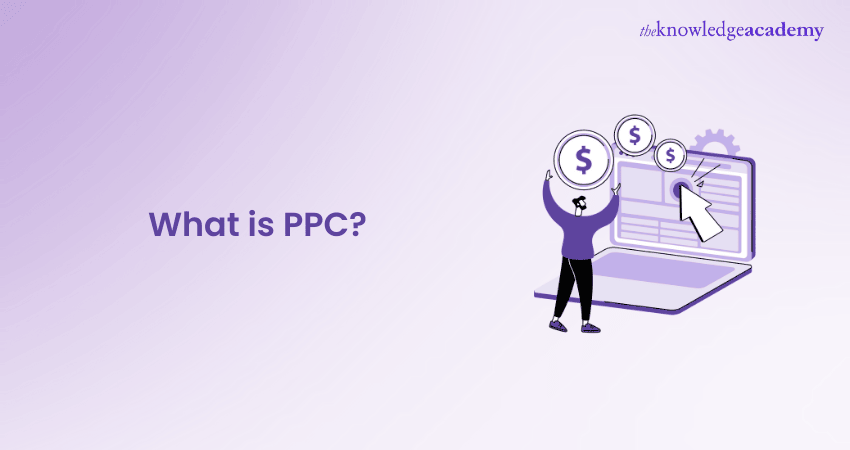
Curious about how a simple tool can give your business a much-needed business-driven direction and boost? PPC is not merely a powerful digital marketing tool today for driving targeted traffic to your website; it can instantly allow you to reach your audience through the PPC process by placing ads on platforms like Google, Bing, and social media.
But here’s a twist! You only pay when someone clicks on your ad. This makes it a budget-friendly choice for global digital marketers.
Now, honour the grace of your website at the top of Google and make it sunshine through the Pay-Per-Click (PPC) tool. By leveraging this tool, you can easily target your ideal audience to ensure your message hits the spot as it strikes.
Table of Contents
1) What is PPC? The Basics of Pay-Per-Click in Digital Marketing
2) What Are the Key Elements of PPC Strategy and Campaign Planning?
3) How Does Pay-Per-Click (PPC) Work in Marketing?
4) Top PPC Platforms
5) Different Types of PPC Ads
6) Advantages of PPC in Digital Marketing
7) PPC vs SEM vs SEO: Key Differences
8) Conclusion
What is PPC? The Basics of Pay-Per-Click in Digital Marketing
PPC is defined as an online advertising system where advertisers pay for each click of the user's ad. This tool is commonly used on several platforms, ranging from search engines (Google, Bing) to YouTube and marketplaces (Amazon).
Let’s take an example to understand this term in a better way. When you search for something on Google, for instance, a course, you will see a complete ad list of the top courses at the top of SERP.
Moreover, when you click on them, the advertiser pays a small portion of the fee to Google. But this is just the tip of the iceberg. Below, we have listed some of the key features of PPC:
1) Keyword Targeting
PPC enables businesses to target specific keywords related to their products, services, or audience. When companies perform this keyword bidding, ads are displayed whenever users search for those terms.
2) Precise Audience Targeting
In addition to keyword targeting, businesses can also make use of precise audience targeting options. This allows them to define their target audience based on demographics, location, interests, and behaviours.
3) Ad Scheduling
PPC platforms also offer features for ad scheduling. This allows businesses to control the way their ads are displayed. This enables companies to show ads during specific or alternate days of the week. Moreover, it allows them to target specific times of the day when their audience is most active or likeliest to convert.
Ready to elevate your marketing skills? Explore our Marketing Courses to level up your career.
4) Ad Customisation
Ad customisation features allow businesses to provide additional information or links, helping their ads stand out and attract users' attention.
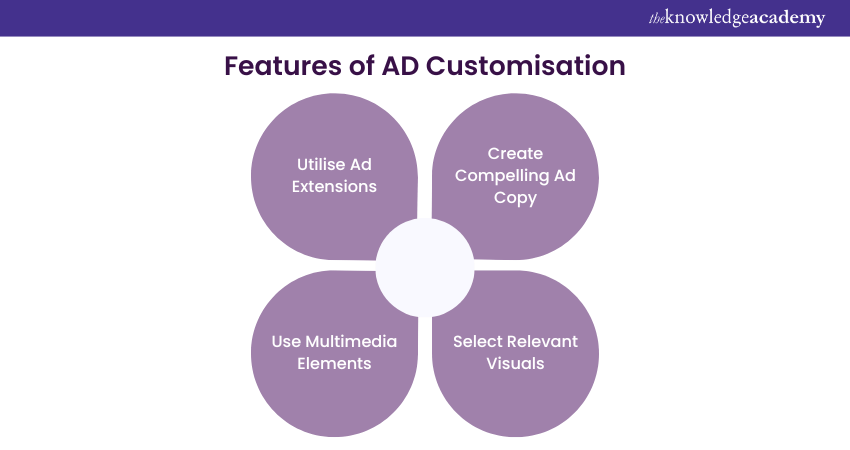
By customising ads, organisations can effectively communicate their unique selling points or offers, making their advertising more compelling and engaging.
5) Real-time Performance Tracking
Real-time Performance Tracking is defined as the PPC campaigns that provide powerful tracking and analytics tools for delivering real-time performance data. These tools enable businesses to monitor essential metrics. This ranges from impressions, clicks, CTR, conversions, and cost per conversion (CPR).
6) Budget Control
PPC allows businesses to completely take control on their advertising budget. Advertisers can set daily or monthly spending limits, perform bids adjustment, and pause or stop campaigns when required.
What Are the Key Elements of PPC Strategy and Campaign Planning?
The key elements of PPC Strategy and Campaign Planning are Keyword Research and Ad Scheduling. Here is a detailed overview of these key elements:
1) Click-Through Rate (CTR)
Click-Through Rate (CTR) measures the percentage of users who click on an ad after they view it. It is calculated by dividing the total ad click numbers by the number of ad impressions.
2) Conversion Rate (CR)
Conversion Rate (CR) measures the percentage of users who complete a desired action after clicking on your ad. This action could be for purchasing, filling out a form, or subscribing to a newsletter.
3) Return on Ad Spend (ROAS)
Return on Ad Spend (ROAS) measures the revenue earned for every dollar that are spent on advertising. It is calculated by dividing the total revenue generated from campaigns by the total overall campaign cost.
4) Quality Score
Quality Score is a key metric that is used by search engine platforms like Google Ads to evaluate their keyword quality. It is determined by several factors, which include the expected click-through rate (CTR), ad relevance, landing page experience, and historical performance.
5) Cost Per Click (CPC)
Cost Per Click, is the amount organisations pay each time a user clicks on their ads. It is influenced by factors such as bid competition, ad relevance, and Quality Score.
Monitoring CPC helps businesses manage their budget effectively and evaluate the cost-efficiency of their PPC campaigns, ensuring they are getting the most value from their advertising spend.
6) Impressions
Impressions represent the times user ads are displayed, providing valuable insights into PPC campaigns reach and visibility. A high number of impressions indicates that a large audience is watching the ads.
7) Cost Per Conversion
Cost Per Conversion is the average spent cost on PPC advertising for each achieved conversion. It is calculated by dividing the total campaign costs by the total conversion numbers.
8) Analytics and Campaign Optimisation
PPC tools offer crucial data for campaign optimisation. By analysing these metrics, organisations can:
1) Identify Trends and Patterns: Spot emerging trends and recurring patterns to stay ahead.
2) Pinpoint Areas for Improvement: Recognise weak spots and opportunities for enhancement.
This data-driven approach enables informed decisions on:
1) Bid Adjustments: Fine-tune bids to maximise ROI.
2) Keyword Optimisation: Select and refine keywords for better targeting.
3) Ad Copy Refinement: Improve ad copy to increase engagement and conversions.
4) Landing Page Enhancements: Optimise landing pages for better user experience and higher conversion rates.
Regular monitoring and analysis of these metrics help organisations:
1) Refine Strategies: Continuously improve strategies based on data insights.
Analytics and campaign optimisation are essential for successful PPC advertising. By analysing data, organisations can identify trends and improve weak areas.
How Does Pay-Per-Click (PPC) Work in Marketing?
PPC works by allowing advertisers to efficiently perform keyword bidding. Here’re the steps to follow for an effective PPC campaign:
1) Keyword Selection
The foundation of any PPC campaign that are successful is keyword selection. Conducting detailed keyword research is essential to ensure these keywords align with user search intent and have adequate search volume.
2) Ad Creation
Once the keywords have been decided, the next step is to develop compelling ads for efficiently capture users’ attention. The ad copy must comprise the following features:
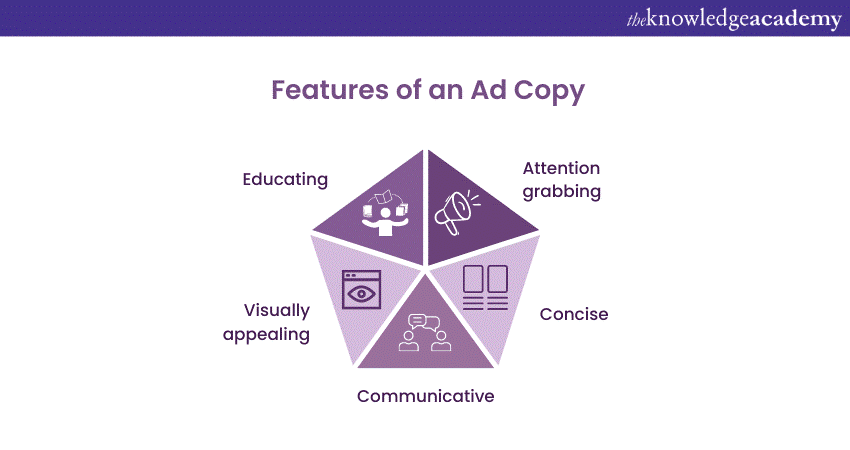
a) Educating
b) Attention grabbing
c) Visually appealing
d) Concise
e) Communicative
3) Bidding and Budgeting
PPC operates on a type of bidding system where advertisers can set a maximum bid for ad placement based on selected keywords. However, ad position is influenced by more than just the bid amount.
4) Ad Rank and Ad Placement
Ad Rank and ad placement are determined by search engines through a combination of factors. Ad Rank is calculated based on the amount of bid and Quality Score, which includes the relevance of the ad, landing page experience, and expected click-through rate (CTR).
5) Ad Display and Cost Calculation
Advertisers do not incur costs when an SERP ad is displayed; costs are incurred only when a user performs ad clicking (Pay Per Click).
6) Ongoing Optimisation
Ongoing optimisation is a strategy where the brands make the most out of their PPC campaigns. In this, you can quickly refine your selection of keywords, adjust bidding and test different ad variations. You can drive better results and improve performance over time by continuously monitoring and analysing your campaign data.
Gain an in-depth understanding of marketing audit with our Introduction To Marketing Training.
Top PPC Platforms
Several platforms offer robust advertising solutions. Each of them offers unique features and benefits. Let's find out some of the top PPC platforms that businesses can use to maximise their advertising efforts:
1) Google Ads
Google Ads is among the most popular ad placement platforms today. It (formerly Google AdWords) is defined as the PPC platform that offers various ad options, ranging from Search Ads and Video Ads to App Ads.
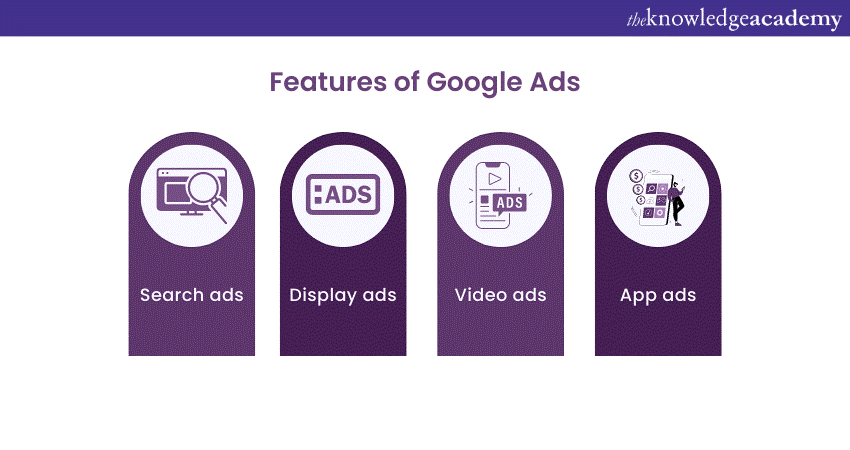
2) Microsoft Advertising
Businesses can showcase their ads on the search engine through Microsoft advertising along with Yahoo and AOL, which are similar partner sites. The platform offers ad formats identical to Google Ads.
3) Facebook Ads
Facebook Ads is another popular ad type that allows businesses to craft precisely targeted ads by leveraging demographics, interests, behaviours, and connections. The platform also offers various ad formats. These include image ads, video ads, carousel ads, and sponsored content.
4) Instagram Ads
Instagram Ads is a PPC platform tailored for advertising on popular images and video-sharing social media platforms. As part of Facebook Ads, it offers similar audience targeting options and ad formats.
5) Twitter Ads
Twitter Ads allow businesses to create promoted tweets and accounts to uplevel their visibility and platform engagement. Additionally, it provides a wide array of targeting options on the basis of demographics, interests, and keywords.
6) YouTube Ads
YouTube Ads allows businesses reach a vast and more engaged audience through video ads. With its extensive targeting options, advertisers can choose specific demographics, interests, and their ad behaviours. Whether you are using skippable, non-skippable, or bumper ads, YouTube offers a high-level of flexibility in ad presentation.
7) LinkedIn Ads
LinkedIn Ads offer businesses a unique opportunity to target professionals on the basis of job titles, industries, and skills. This platform is particularly effective for B2B advertising. It allows businesses to showcase their services to a highly specific, business-oriented audience.
Different Types of PPC Ads
Understanding the Different Types of PPC Advertising can help businesses to choose the right platforms and strategies to maximise their advertising effectiveness. Here are some of the key types of PPC Ads:
1) Search Advertising
This is one of the most common and widely used forms of PPC advertising. It involves displaying text ads on SERPs when users search for specific keywords or phrases. The ads appear at either the top or bottom of the search results and are often labelled as “sponsored” or “ad.”
Google Ads is the most popular search advertising platform. It allows businesses to bid on keywords and display their ads to users searching for relevant terms.
2) Display Advertising
Display advertising involves placing visual banner ads on websites within a publisher’s networks. A key example of this display advertising is Google Display Network. These ads can include various types of images, videos, and other interactive elements or infographics.
3) Social Media Advertising
Social Media Advertising is defined as the efficiency of Facebook, Instagram, Twitter, and LinkedIn to enable businesses to create highly targeted ads. It allows businesses to engage with their audience and promote products or services. It also helps drive website traffic and generate vast leads.
4) Remarketing or Retargeting Approach
Remarketing is a process of user targeting who have visited a website of the business previously or shown interest in its products or services. This strategy allows businesses to display ads in particular to these users.
5) Video Advertising
Video Advertising has gained significant popularity in the recent times. Some of the top social media platforms, like YouTube, offer advertising options that allow businesses to display video ads before, during, or after user-selected videos.
This type of PPC Advertising has gained significant popularity in recent years. Some of the top social media platforms like YouTube offer advertising options that allow businesses to display video ads before, during, or after user-selected videos.
6) Shopping Ads
Shopping ads are designed specifically for e-commerce businesses in order to promote their products within search engine results directly. These ads display product images, prices, and merchant information, further making them highly informative and visually appealing.
Understand the use of market research in business models and frameworks with our Marketing Research Training – Register now!
Advantages of PPC in Digital Marketing
PPC Advertising offers a wide array of advantages that can greatly impact the success of online marketing campaigns. Here are the key advantages of PPC in terms of Digital Marketing:

1) Targeted Advertising
PPC allows businesses to target their ads precisely to specific keywords, demographics, and locations. This level of targeting ensures that their ads are shown to the relevant audience, which increases the chances of attracting a large number of potential customers.
2) Increased Visibility
With PPC, businesses can bid on relevant keywords. Their ads can appear prominently on SERPs, increasing brand visibility. This makes their brand more noticeable to users searching for specific terms related to their business.
3) Measurable Results and Return on Investments (ROI)
Businesses can monitor their campaign performance through PPC analytics and tracking tools. It further helps them gain insights into key metrics such as click-through rates, conversion rates, and cost per conversion.
4) Flexibility and Control Over Budget
In traditional advertising, fixed costs are unavoidable. However, this model lets businesses set a flexible budget, allocating funds according to their specific needs. They can adjust bids, pause campaigns, and make real-time modifications. This ensures their budget is utilised effectively and efficiently.
5) Quick and Immediate Results
PPC provides instant visibility. Once campaigns are set up and approved, the organisation’s ads can start appearing and almost instantly drive traffic to their website. This immediacy can particularly benefit businesses seeking immediate leads, sales, or promotional opportunities.
PPC vs SEM vs SEO: Key Differences
Understanding the distinctions between PPC, SEM, and SEO is important for businesses who are looking to improve their online presence. Each strategy has a vital role in boosting visibility on search engines, offering different benefits in terms of cost, time, and long-term sustainability. Here are the key differences between all three:
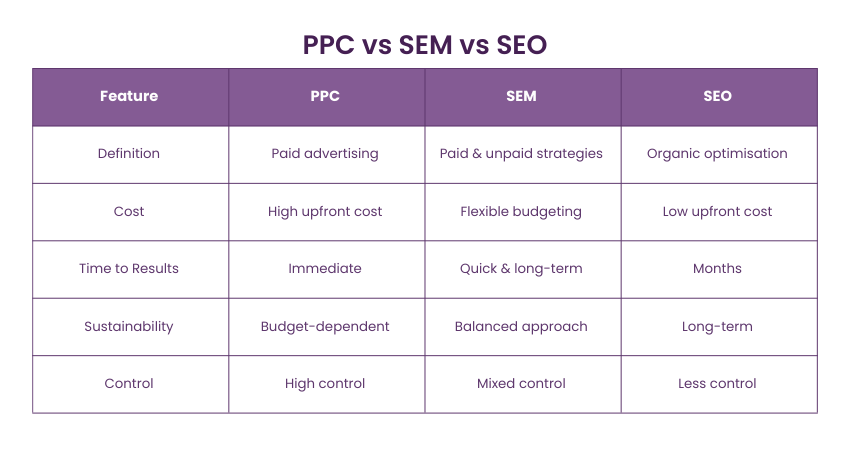
1) Definition and Scope
a) SEM is a broad term that includes both paid and unpaid strategies to improve a website's visibility on search engines. It encompasses activities like PPC advertising and SEO.
b) PPC is a type of online advertising where advertisers pay each time a user clicks on their ad, working with search engines and other platforms like YouTube and social media.
c) SEO involves optimising a website's content and structure to improve its organic search engine rankings through keyword research, meta data optimisation, quality content creation, and earning backlinks.
2) Cost and Investment
a) PPC requires a financial investment as advertisers pay for each click on their ads. This can provide immediate visibility but can be costly over time.
b) SEM includes both paid (PPC) and unpaid (SEO) strategies, balancing immediate and long-term investments.
c) SEO, on the other hand, focuses on organic methods that do not require direct payment for clicks but involve time and effort in optimising the website for search engines.
3) Timeframe for Results
a) PPC can deliver immediate results as ads appear at the search engine results pages' top as soon as the campaign is launched.
b) SEM combines the quick results of PPC with the longer-term benefits of SEO.
c) SEO typically takes longer to show results, as it involves building up the website's authority and relevance over time through consistent optimisation efforts.
4) Sustainability and Longevity
a) PPC provides quick visibility but stops delivering results once the advertising budget is exhausted.
b) SEM offers a mix of short-term and long-term strategies, balancing immediate gains with sustainable growth.
c) SEO is a long-term strategy that is constantly drive organic traffic even after the initial optimisation efforts, making it more sustainable over time.
5) Control and Flexibility
a) PPC offers high control and flexibility, allowing advertisers to adjust their campaigns, target specific audiences, and set budgets as needed.
b) SEM includes this flexibility through PPC while also incorporating the more stable, long-term approach of SEO.
c) SEO, while less flexible in terms of immediate changes, provides a stable foundation for organic growth and can adapt to algorithm updates and changing search trends.
Conclusion
We hope that after reading this blog, you have got a detailed overview of What is PPC. By harnessing its various features, businesses can optimise their campaigns, enabling them to allocate their budget effectively and achieve measurable online advertising success. So, are you ready to use this powerful tool to elevate brand visibility and target audience and drive tangible results.
Ready to master PPC advertising? Register for our Pay Per Click (PPC) Training now!
Frequently Asked Questions

The 4 Cs of PPC are cost, which involves managing the budget and bids, Click-Through Rate (CTR), and measuring the percentage of ad clicks. Conversion Rate, tracking how many clicks lead to actions (sales, sign-ups), and Content, ensuring the ad copy is relevant to the target audience.

Pay-per-click (PPC) is a broader model where advertisers pay for each click their ads receive. CPC (Cost Per Click) refers to the specific price an advertiser pays for each click in a PPC campaign. PPC is the strategy, while CPC is the cost metric used to measure its effectiveness.

The Knowledge Academy takes global learning to new heights, offering over 30,000 online courses across 490+ locations in 220 countries. This expansive reach ensures accessibility and convenience for learners worldwide.
Alongside our diverse Online Course Catalogue, encompassing 19 major categories, we go the extra mile by providing a plethora of free educational Online Resources like News updates, Blogs, videos, webinars, and interview questions. Tailoring learning experiences further, professionals can maximise value with customisable Course Bundles of TKA.

The Knowledge Academy’s Knowledge Pass, a prepaid voucher, adds another layer of flexibility, allowing course bookings over a 12-month period. Join us on a journey where education knows no bounds.

The Knowledge Academy offers various Marketing Courses, including the Pay Per Click (PPC) Course, Web Analytics Course, and Conversion Rate Optimisation Course. These courses cater to different skill levels, providing comprehensive insights into Marketing Campaign.
Our Digital Marketing Blogs cover a range of topics related to Search Engine Optimisation, offering valuable resources, best practices, and industry insights. Whether you are a beginner or looking to advance your SEO skills, The Knowledge Academy's diverse courses and informative blogs have got you covered.
Upcoming Digital Marketing Resources Batches & Dates
Date
 Pay Per Click (PPC) Training
Pay Per Click (PPC) Training
Fri 10th Jan 2025
Fri 28th Feb 2025
Fri 4th Apr 2025
Fri 16th May 2025
Fri 11th Jul 2025
Fri 19th Sep 2025
Fri 21st Nov 2025







 Top Rated Course
Top Rated Course



 If you wish to make any changes to your course, please
If you wish to make any changes to your course, please


